Nazar Bilyk Sculpture
Sculptor Nazar Bilyk creates negative-space artworks leaving the viewer recreate the original shape while viewing it
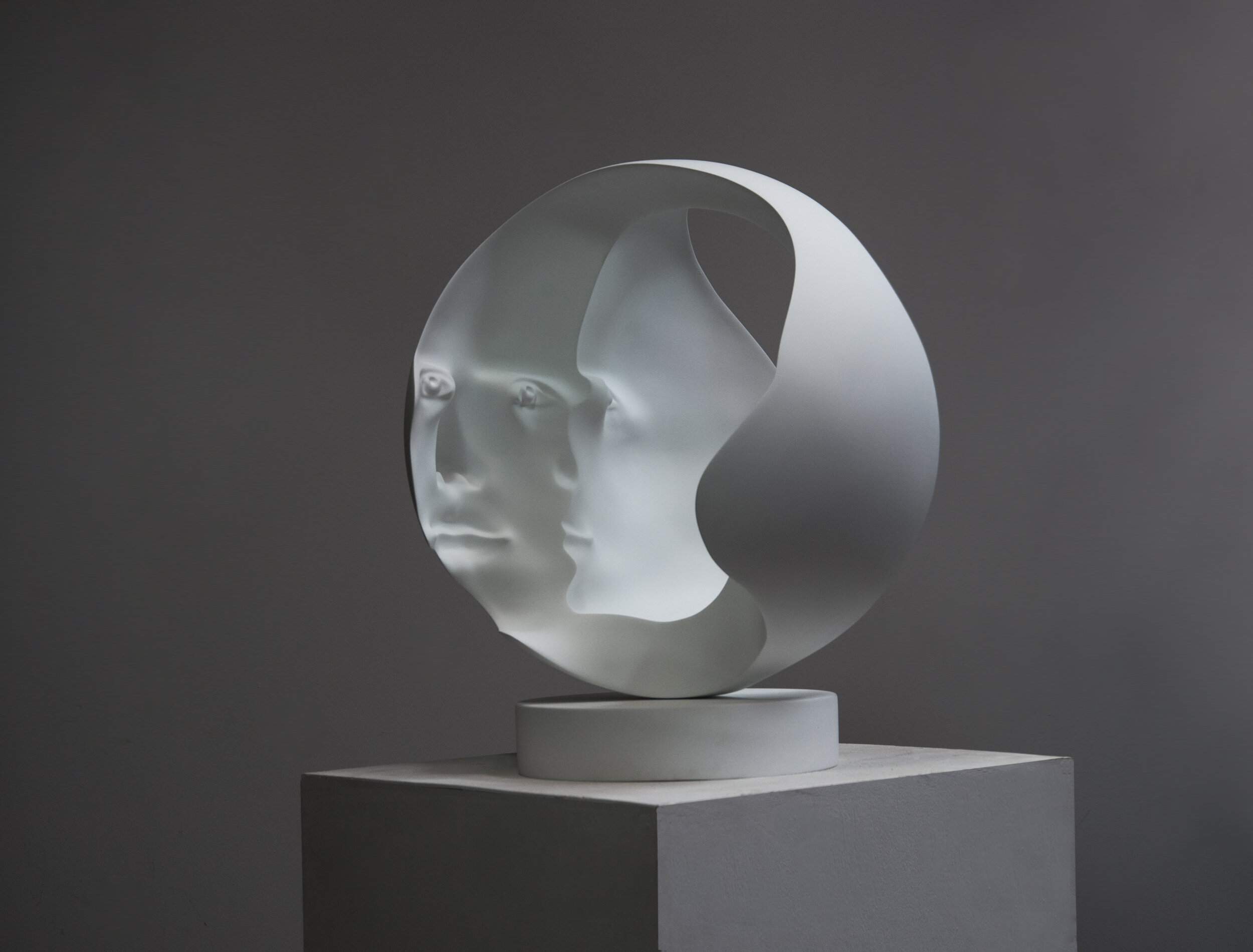
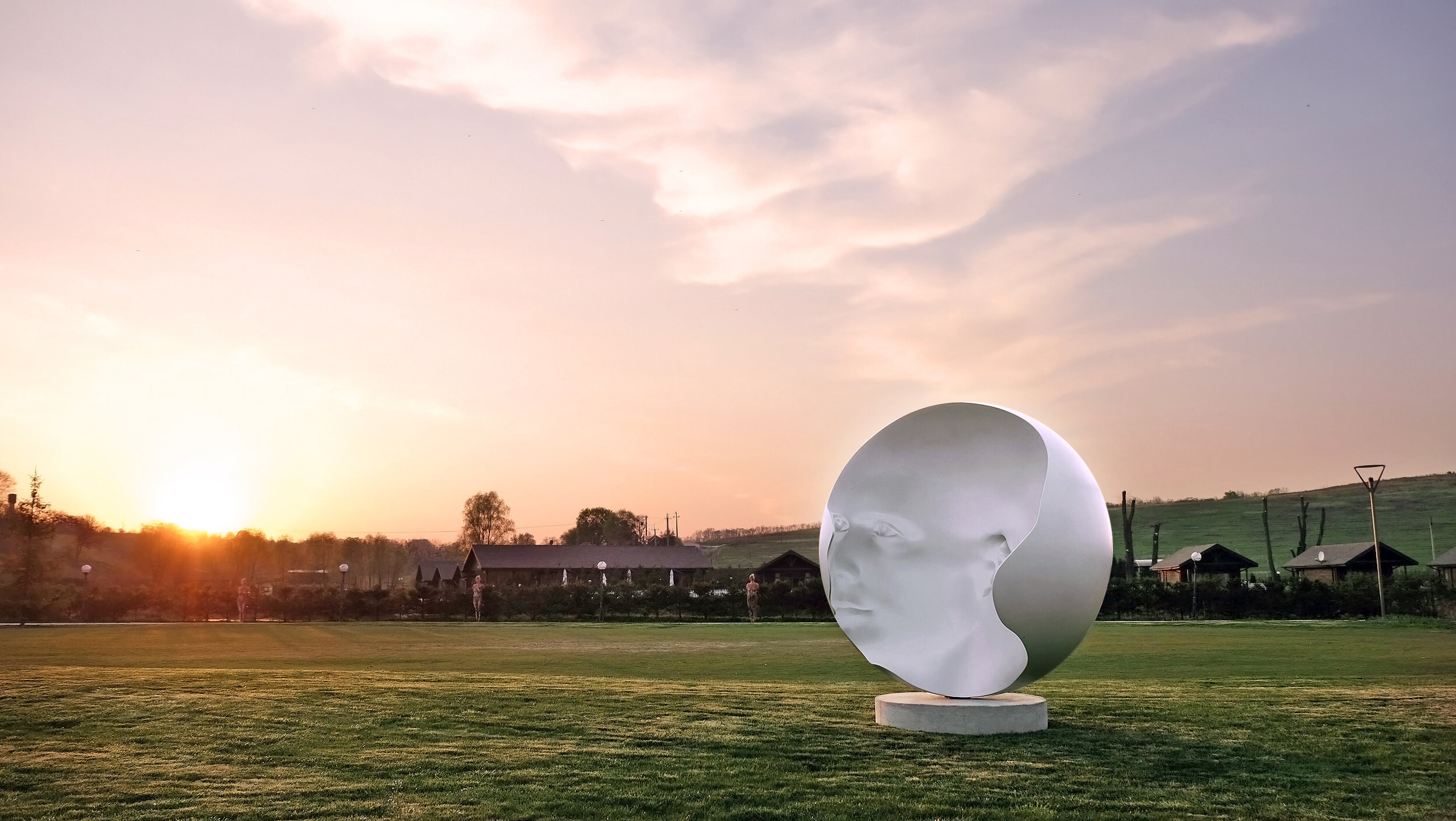
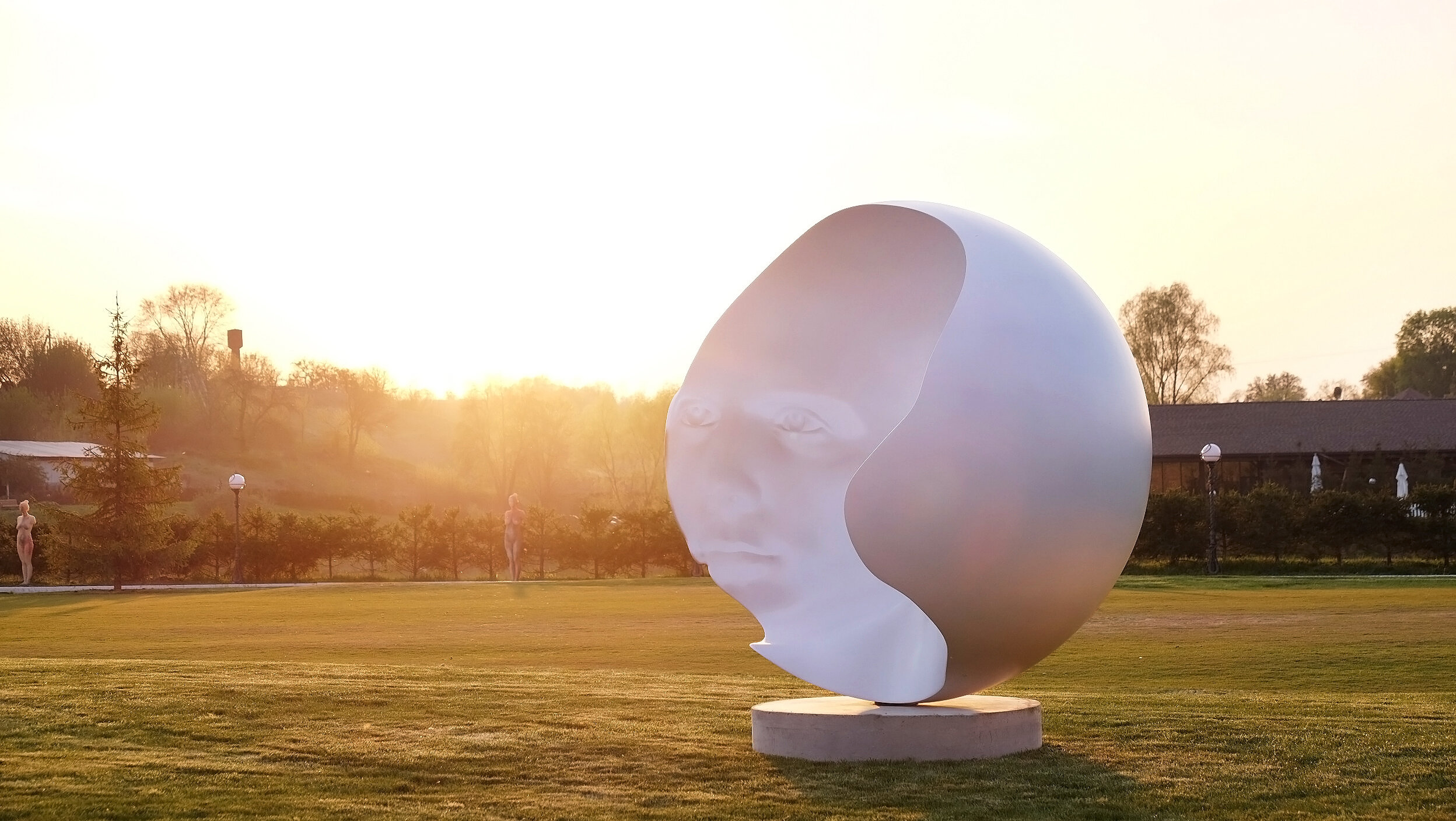
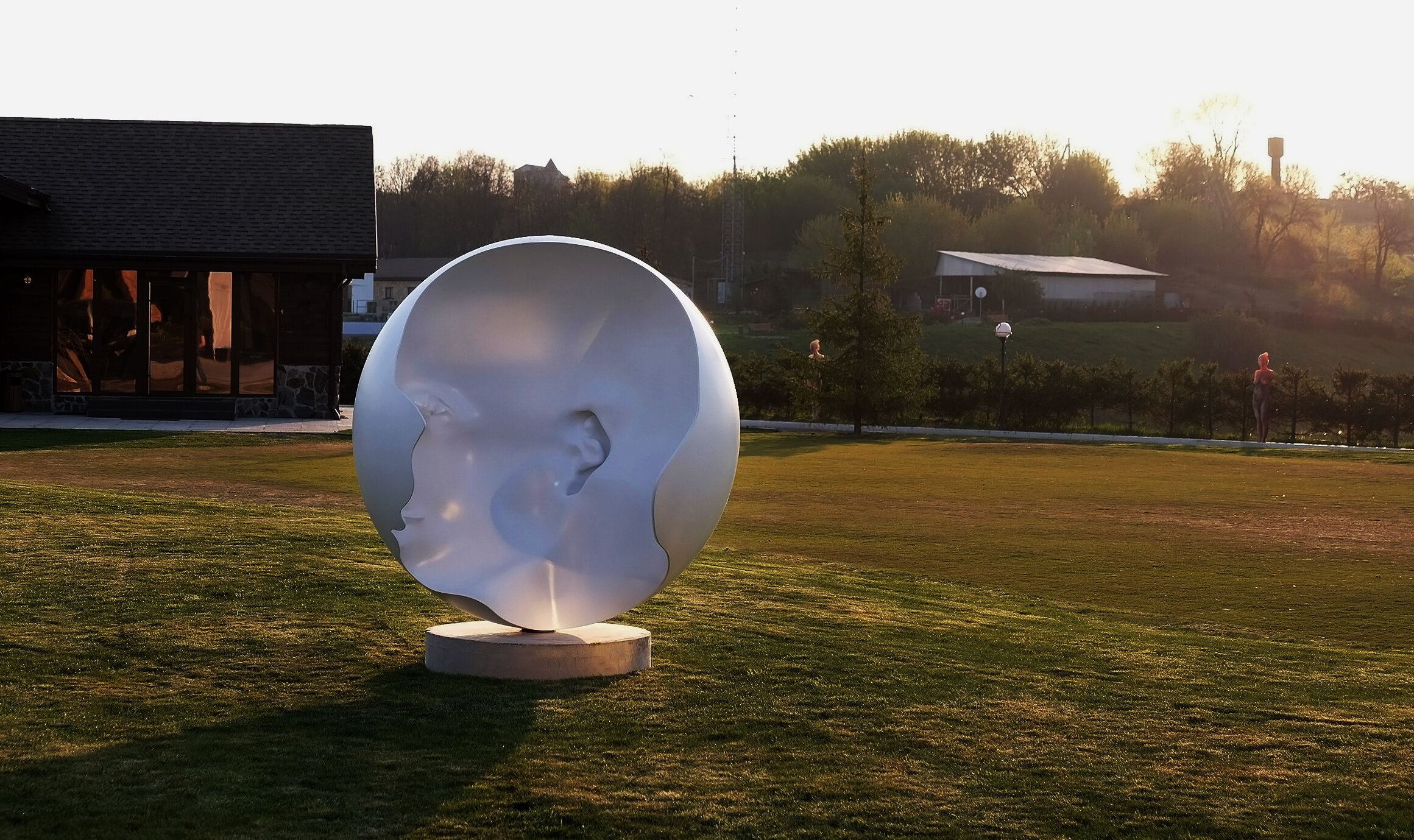
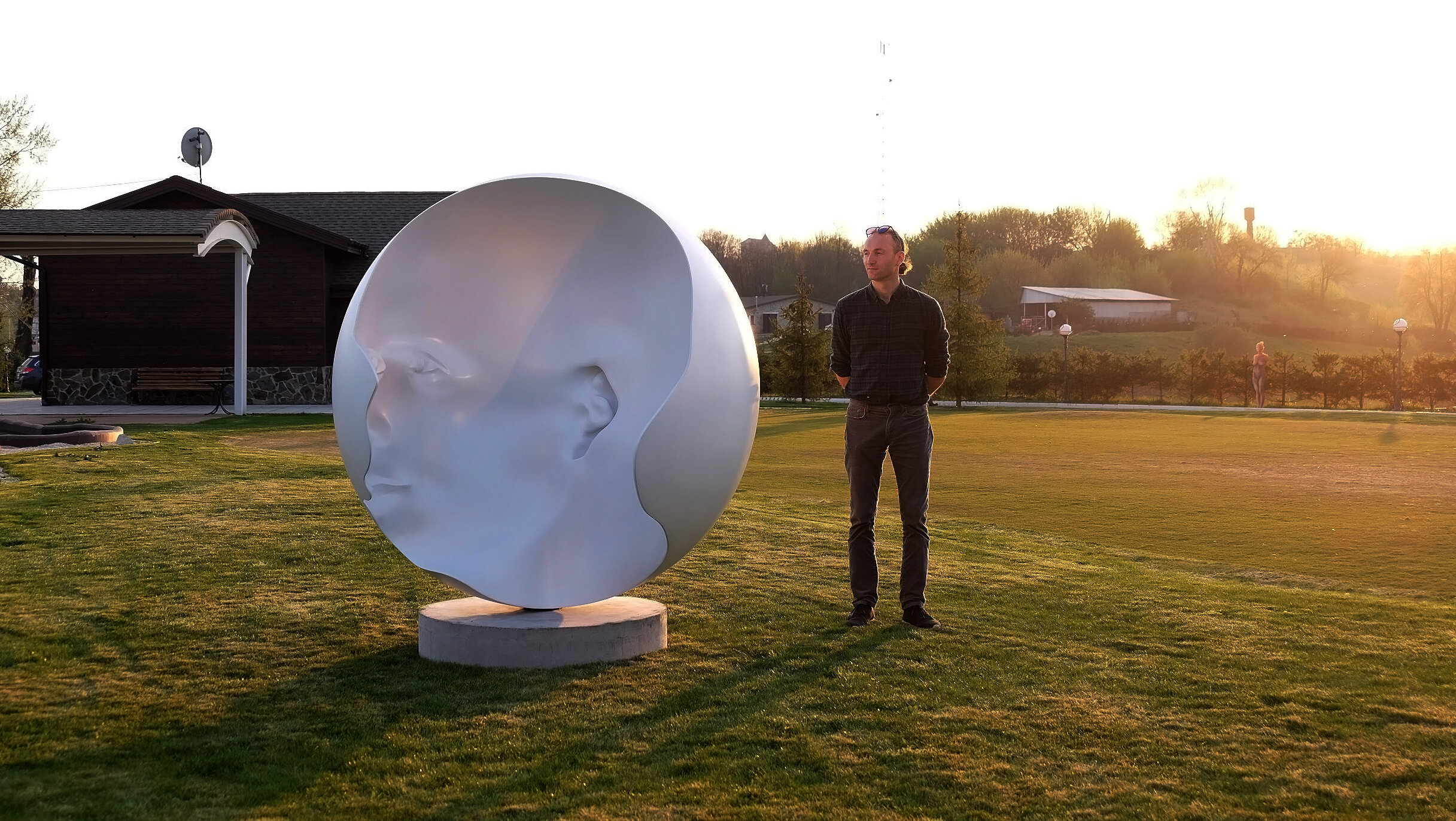
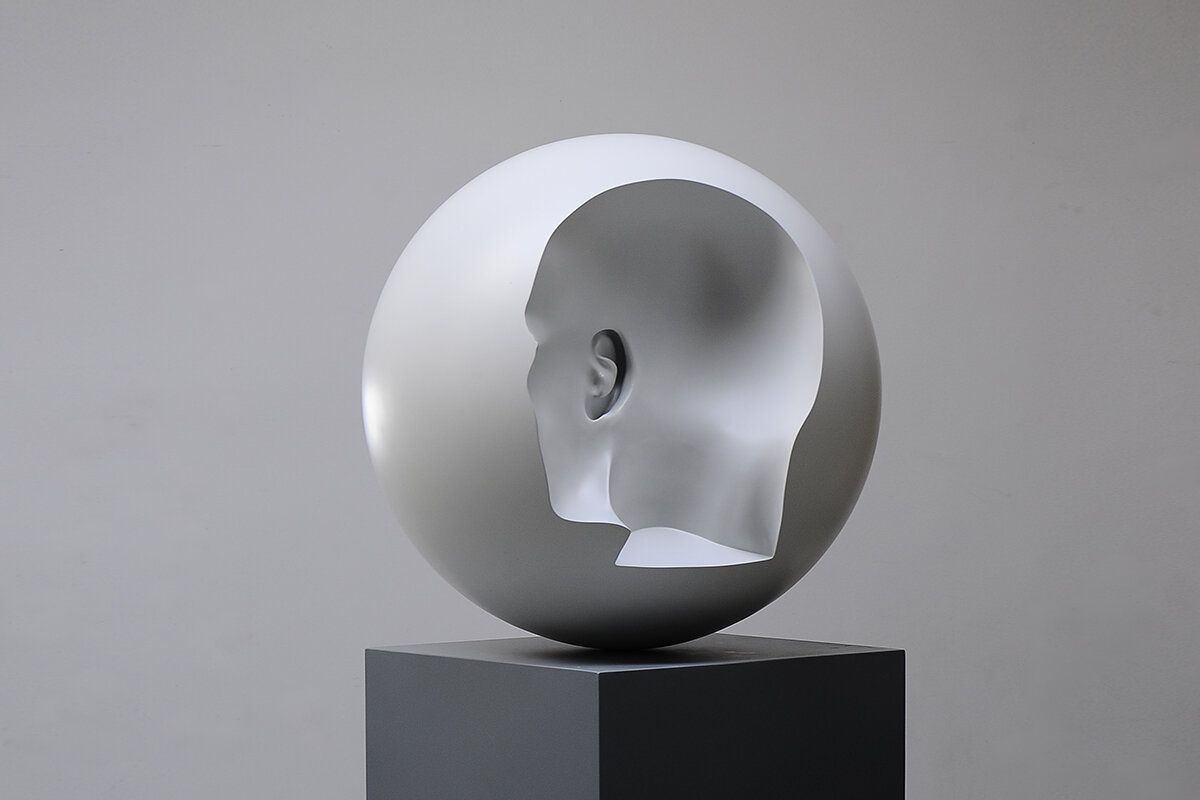
Sculptor Nazar Bilyk creates negative-space artworks leaving the viewer recreate the original shape while viewing it
Canadian artist David Umemoto creates Escher-esque concrete miniature pieces that evoke temporary buildings or monuments standing on far-away lands.
“The images conveyed in the mind by these works are numerous. They refer to the archaic and the ephemeral, despite the solidity and the modernity of the medium. Appearing before our eyes are pre-Columbian rock dwellings, god statues from the Andes or Easter Island, steles deteriorated by rain, remnants of modern cities having survived a cataclysm, fragments of Babylonian cities, colonial settlements brought down to their foundations, cenotaphs abandoned in the jungle…”
Since 1995, Lars-Erik Fisk has reimagined familiar and common-place objects into spheres, which he considers a "basic form… that we can all understand, but is at the same time the least likely form for these subjects to assume.”

Transforming objects in this way engenders a fascination with the mundane and elevates otherwise unnoticed details of one’s everyday surroundings to works of art that demand attention.
Made primarily by hand in the artist’s Brooklyn studio, each circle is designed to engage ordinary elements from parking lots, subway tiles, car parts and pencil stubs. The eclectic material palette uses the components of these architectural and urban facets – namely steel, glass and asphalt – and turn them into perfect spheres; transforming the simple theory into a potent array of sculptures.
Working predominantly in sculpture and drawing, Paul Kaptein’s practice is informed by notions of Pneuma and Sunyata in exploring the fluid space between form and emptiness. Motivated by the energies that exist beneath the surface of things, his work is activated through glitches, warps, spaces, gaps, holes and fissures.
Exploring the body as the interface between quantum, relative, technological, spiritual, material, psychic and conscious states, my work collapses distinctions of internal and external binaries and linear temporalities to explore notions of identity and boundaries of self.
Gavin Worth is a sculptor and artist based in Egypt. As well as painting, he makes these amazing sculptures out of wire. Each sculpture is subtly complex, built out of grouped wire, with the wire only forming a clear image once it’s viewed from the right angle.

“My wire sculptures tell stories of simple human moments: a woman adjusting her hair, a face gazing from behind tightly wrapped arms, a mother gently cradling her baby. The honest, unguarded moments are the ones that I find to be the most beautiful”
Started as a fun series several years ago becomes a personal art project “Hipsters in Stones” of Leo Caillard, artist and resident of MTArt Agency.
“The statues, with their clothes stripped away reveal a magnificence of shape and balance. But what were the greeks wearing when they weren’t posing for sculptors? Appearance, in all its many nuances, presents character. One’s dress sense indicates one’s priorities, choices, lifestyle — are you ‘in’ or are you ‘out’? Hipster or classic? Which tribe are you a member of? which tribe we the men posing for these statues from? Hipsters in stone presents a twist on these themes — take the ultimate from the classic world and add a modern, contemporary twist”

American artist Paolo del Toro painstakingly creates huge felt heads that appear to us as a mix of ritual and tribal masks from Central and South America and friendly characters from Japanese animations of Hayao Miyazaki.
FIRMAVERA is the artistic practice of Natalia Romanova, based in London. Her product design ethos stems from her soviet childhood’s constructivist heritage and her experience as an industrial designer. She is influenced by an appreciative knowledge of engineering and industrial processes as well as the radical honesty of utilitarian and brutalism architecture.
The unpretentious beauty found in these disciplines informs her artistic practice which expands into experimentation through shape and perception. The frequent use of ceramics is a suitable canvas to convey a truthfulness to material while elevating the functional aesthetic into objects that are celebrations of that raw utopian vision.
Exposed overstructures, pattern repetitions and modularity hint at mass-production techniques and a brutalist rejection of ornaments. Ethical and functional intentions incidentally become malleable materials. The objects of FIRMAVERA are therefore playing with the notion of form and function, reconsidering their relationship in order to question the traditional norm of beauty.
Multidisciplinary artist Luke Jerram has created several exacting 23-foot replicas of the moon, which are currently touring the world as Museum of the Moon. The lunar project has been installed in public spaces ranging from China and Finland to the United Arab Emirates and Australia, and is accompanied by music from composer Dan Jones. Locations vary and include indoor and outdoor spaces as well as festivals, to intentionally alter the interpretation and experience of the project for viewers around the world.
Talented marble artist Fabio Viale creates an upgrade versions of classic masterpieces aligning them to the modern society state of things (and its current meltdown with gangster culture). His tattooed marbles are the pieces to think about the contemporary life priorities and “what’s going to left after us”
Artist Leni Dothan
This innovative art project by Leni Dothan was prompted by the desire to raise a stronger awareness towards the invisible enemy that is air pollution. Together with the Chemistry department of UCL, Leni created these photographs on 200 Portland stones using London’s air pollution
Texts by Marine Tanguy MTArt Agency
This project is a perfect conceptual and chemical symbiosis between science and art, aiming for awareness and a response to air pollution through public art in between London and Portland Isle. During the b-side biennale, the artist will transform the Verne High Angle Battery into a rehab centre for air polluted sculptures made in London.
These sculptures will be the outcome of an ongoing research based collaboration with Dr. Raul Quesada-Cabrera, expert in photochemistry at UCL, prof. Andrea Sella and Sana Ali. Together, they developed a pollution-reactive material in UCL’s Chemistry lab.
Artist Leni Dothan
Leni Dothan will bring these polluted sculptures to Portland for them to be cleaned while on display at the Verne High Angle Battery for nine days. The audience will witness the colour changes on the sculptures as the artworks react to a healthier context. The sculptures will become a powerful tool for public awareness towards the growing issue that is air pollution, especially in cities.
Marine Tanguy
Founded in 2015, MTArt is the first artist agency in the world for the world’s most exciting up and coming visual artists. While the art world concentrates on selling art on walls, the agency focuses on investing and supporting the artists. Every month, the agency reviews 200 portfolios of artists. Its selection committee select artists with innovative techniques, inspiring content and strong visions.
Marine Tanguy at Portland (UK) installation of Lent Dothan
For the artists who sign with the agency, MTArt covers their studio costs, sells their works, implement cultural & commercial partnerships and offers press exposure. This is how the agency accelerates their artistic reputation, visibility and success.
"Japanese artist Toshiya Masuda builds pixelated objects out of clay, piecing together sculptural tennis shoes, fried eggs, and baseballs that look as if they have been pulled directly from a video game. By designing his works to appear digital, Masuda provides a physical quality to computer or television-based images. The combination of ceramics and digitized objects allows the artist to blur the line between what is real and virtual, an increasingly common experience in our present age."
"This series of works takes the ocean crisis as the topic, based on the Installation to present the ecosystem destruction by human activities. The singular mutation and death of marine life caused by Radiation and genetic modification, also involved elements of natural, polluting and synthetic." - Kim Yeonhee
The design combined with the destruction of raw materials, plastic, metal, and the dark heavy colors and the emotional impact of the destroyed scene, to interpret the "Ocean Rift".

British sculptor Jason deCaires Taylor has once again left his mark on the environment with a stunning new installation. Created for the Fairmont Maldives Sirru Fen Fushi, Coralarium is a semi-submerged art gallery filled with nearly 30 sculptures that will act as a habitat for coral and other marine species (via MyModernMet)
The Sculpture Coralarium is situated in the centre of the largest developed coral lagoon in the Maldives, on the island resort of Fairmont Sirru Fen Fushi. The artwork by Jason deCaires Taylor is a semi-submerged tidal gallery space that exhibits a series of sculptural artworks on the skyline, inter-tidal waterline and seabed. As world's first semi submerged tidal Art Gallery it is cube shaped, six metres tall, with its front façade submerged up to median tide of three metres. The design of the walls is based on natural coral structures and is porous to allow the tides, current and marine life to pass through and the structure to “breathe” within its location
DCIM\100GOPRO\GOPR4717.JPG
DCIM\100GOPRO\GOPR4514.JPG
From February 7 through March 17, 2018, Pilevneli Gallery presented Refik Anadol’s latest project on the materiality of remembering. Melting Memories offered new insights into the representational possibilities emerging from the intersection of advanced technology and contemporary art. By showcasing several interdisciplinary projects that translate the elusive process of memory retrieval into data collections, the exhibition immersed visitors in Anadol’s creative vision of “recollection.”
“Science states meanings; art expresses them,” writes American philosopher John Dewey and draws a curious distinction between what he sees as the principal modes of communication in both disciplines. In Melting Memories, Refik Anadol’s expressive statements provide the viewer with revealing and contemplative artworks that will generate responses to Dewey’s thesis.
Comprising data paintings, augmented data sculptures and light projections, the project as a whole debuts new advances in technology that enable visitors to experience aesthetic interpretations of motor movements inside a human brain. Each work grows out of the artist’s impressive experiments with the advanced technology tools provided by the Neuroscape Laboratory at the University of California, San Francisco. Neuroscape is a neuroscience center focusing on technology creation and scientific research on brain function of both healthy and impaired individuals. Anadol gathers data on the neural mechanisms of cognitive control from an EEG (electroencephalogram) that measures changes in brain wave activity and provides evidence of how the brain functions over time. These data sets constitute the building blocks for the unique algorithms that the artist needs for the multi-dimensional visual structures on display.
Anadol’s installations do not only address a productive espousal of cutting-edge technology and art but also a strong preoccupation with the study of human memory from Ancient Egyptians to Blade Runner 2049. The exhibition’s title, Melting Memories, refers to the artist’s experience with unexpected interconnections among seminal philosophical works, academic inquiries and artworks that take memory as their principal themes. The title further draws attention to the melting of neuroscience and technology into these centuries-long philosophical debates, questioning the emergence of a new space where artificial intelligence is not in conflict with individuality and intimacy.
Designed & Developed at Refik Anadol Studio
Nicholas Boss
Efsun Erkilic
Kian Khiaban
Ho Man Leung
Raman K. Mustafa
Toby Heinemann
Sound Design : Kerim Karaoglu
Software Development : Kyle McLean / Steffan Klaue
Scientific Support
UCSF / Neuroscape Lab Members
Adam Gazzaley, M.D., PH.D.
"Wanderers" is an ongoing project performed by Mediated Matter group at MIT Media Lab, lead by Prof. Neri Oxman
"Traveling to destinations beyond planet Earth involves voyages to hostile landscapes and deadly environments. Crushing gravity, amonious air, prolonged darkness, and temperatures that would boil glass or freeze carbon dioxide, all but eliminate the likelihood of human visitation. Wanderers explores the possibility of voyaging to the worlds beyond by visiting the worlds within. 3D printed wearable capillaries designed for interplanetary pilgrims are infused with synthetically engineered microorganisms to make the hostile habitable and the deadly alive. Each design is a codex of the animate and inanimate with an origin and a destination: the origin being engineered organisms, which multiply to create the wearable within a 3D printed skins; and the destination being a unique planet in the solar system."
"We explore a computational approach and associated protocol, which emulates biological growth by developing complex geometries over multiple iterations. The general framework for the generation of grown structures utilizes a hybrid approach to the simulation of evolving interfaces. A geometric input representation—phenotype (e.g. a triangle mesh, a set of line segments, or a point cloud) is transformed into an intermediate representation—genotype. Data gathered from these three representations is then used to deform the initial geometric representation. Lastly, the deformed initial representation is topologically changed to react to the deformation of the object. This is done iteratively, such that results given for input representations are continuously deformed and refined. As the process repeats, the deformations aggregate into the growth of a coherent form. By altering the geometric genotype and phenotype, a broad variety of different structures can be ‘grown’."
The setting for this exploration is the solar system where, with the exception of planet Earth, no life can exist. The series represents the classical elements understood by the ancients to sustain life (earth, water, air and fire), and offers their biological counterpart in the form of microorganisms engineered to produce life-sustaining elements. The wearables are designed to interact with a specific environment characteristic of their destination and generate sufficient quantities of biomass, water, air and light necessary for sustaining life: some photosynthesize converting daylight into energy, others bio-mineralize to strengthen and augment human bone, and some fluoresce to light the way in pitch darkness. Each wearable is designed for a specific extreme environment where it transforms elements that are found in the atmosphere to one of the classical elements supporting life: oxygen for breathing, photons for seeing, biomass for eating, biofuels for moving, and calcium for building. Design research at the core of this collection lies at the intersection of multi-material 3D printing and Synthetic Biology.
The Wanderers were unveiled as part of the exhibition: ‘The Sixth Element: Exploring the Natural Beauty of 3D Printing' on display at EuroMold, 25-28 November, Frankfurt, Germany, Hall 11, Booth FN01. This work was done in collaboration with Christoph Bader and Dominik Kolb. The wearables were 3D printed with Stratasys multi-material 3D printing technology. Members of the Mediated Matter group led by Will Patrick and Sunanda Sharma are currently working on embedding living matter in the form of engineered bacteria within the 3D structures in order to augment the environment. Each piece intends to hold life sustaining elements contained within 3D printed vascular structures with internal cavities. Living matter within these structures will ultimately transform oxygen for breathing, photons for seeing, biomass for eating, biofuels for moving and calcium for building. Scientific collaborators include Dr. James Weaver, Prof. George Church, Prof. Pamela Silver, Prof. Tim Lu, Allen Chen, Stephanie Hays, Eléonore Tham and Dan Robertson.

A Million Times at Changi, commissioned by Changi Airport Group, was conceived in 2014 and installed in January 2018 in Terminal 2. It is part of Humans since 1982's A million Times project (2013-ongoing).
“Metaphorically speaking, we liberated the clock from its sole function of measuring and reporting the time by taking the clock hands out of their ‘administrative’ roles and turning them into dancers”
A Million Times at Changi is one of the biggest kinetic sculptures in the world and with its 7,5m amplitude has a 'clock face' that is wider than that of London’s Big Ben (7m).
Each of the 1008 clock-hands (504-minute hands and 504-hour hands) are fitted with individual motors, giving the kinetic sculpture the ability to show various patterns, as well as the time and greetings in various languages across different times of the day

Portuguese student of ESAD School João Xará visualizes the invisible concept of force through his design of glass vessels. The pre-blown glass shapes squeezed by clamps demonstrate the action of force in an intuitive and direct way through the materiality and given direction.
Leading figurative Chinese artist Song Wei is definitely recognised for his "Porcelain Hamburger" (made of fibreglass) and less for the rest of his body of work in classic oil on canvas spiced with Asian cultural twists.
Across the globe, his Porcelain Hamburger will be seen in the bank’s publicity advertisements on print. The image was specifically selected for its representation of a perfect marriage between East and West, the hybrid aesthetics of both cultures, and a perfect ambassador for a bank that serves the world.
Song Wei’s bears are often depicted in everyday situations: eating a lollipop, playing with toys, and even sitting on a toilet bowl. While his works appear joyous, carefree and fun loving, there are undoubtedly deeper meanings behind them. His paintings not only remember his childhood memories and adult experiences, but also reflect the impact of Western merchandise, the changes in Chinese values and mentality, traditions and modernisation, honesty and controversy, capitalism and consumerism, as well as the welding of Eastern and Western cultures in our metropolitan societies.
Text via ArtTagCircle
The Squash is an immersive installation combining performance and sculpture by 2016 Turner Prize nominee Anthea Hamilton. The artist has designed seven costumes in collaboration with LOEWE Creative Director Jonathan Anderson to be worn by the performers. The Squash has been created for the annual Tate Britain Commission, which invites contemporary British artists to create new artwork in response to the grand space of the Duveen Galleries.
“It’s kind of surreal to see it, especially when you come in here with the Pre-Raphaelites. I saw this show that Anthea did with Hepworth, which was about reassembling Kettle’s Yard’s collection and re-contextualising it. You know, when you see all of this together, it can kind of become a bit… heavy.”
Direct Painting Group has laid over 7000 white ceramic tiles for the design background of Anthea's exhibition.